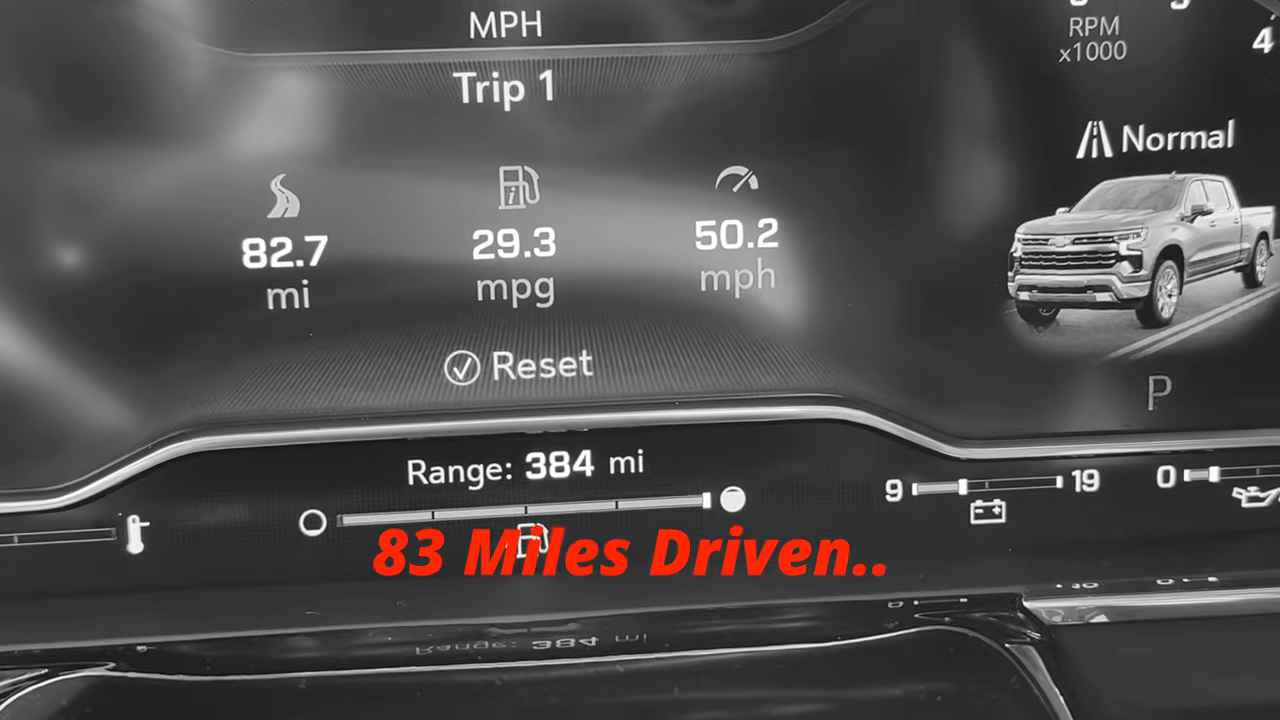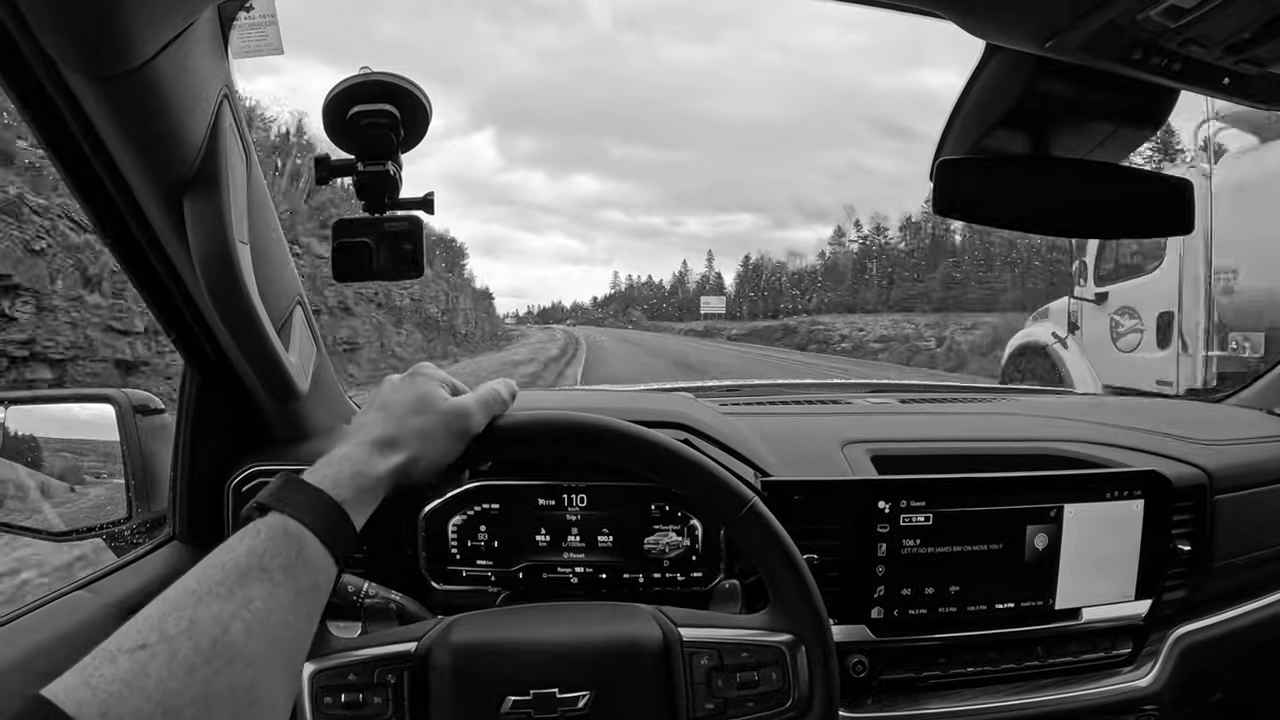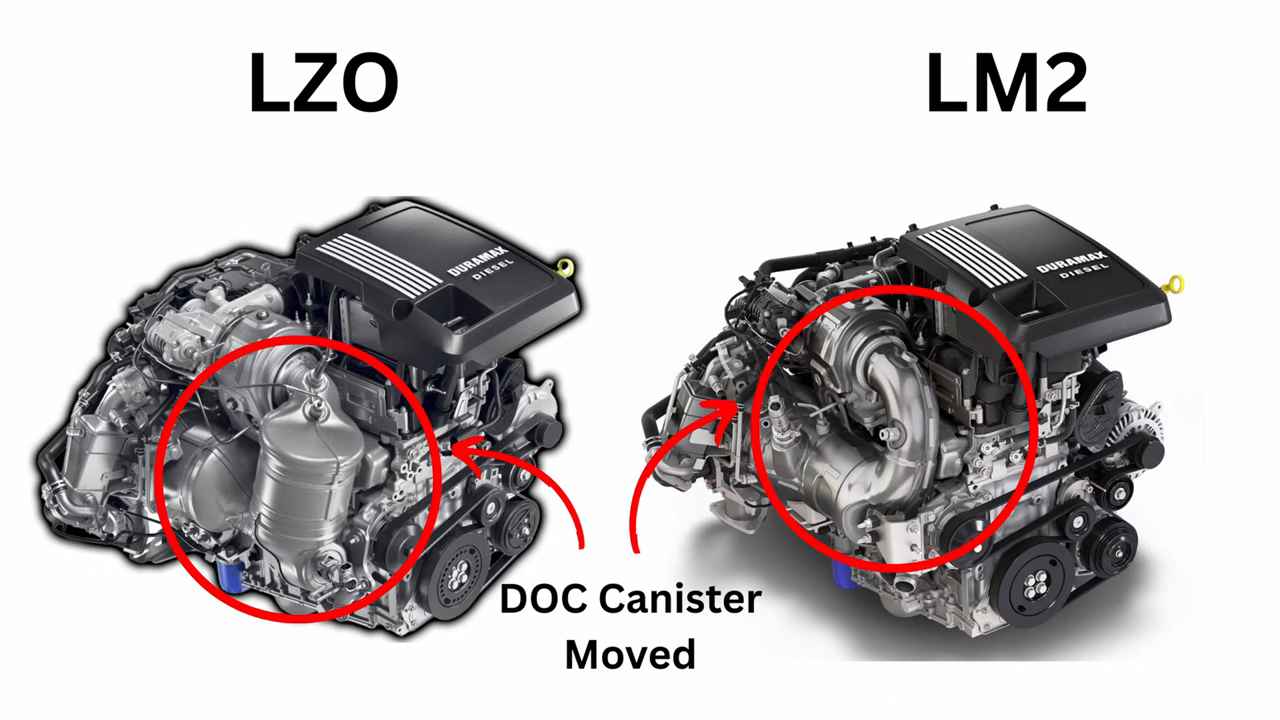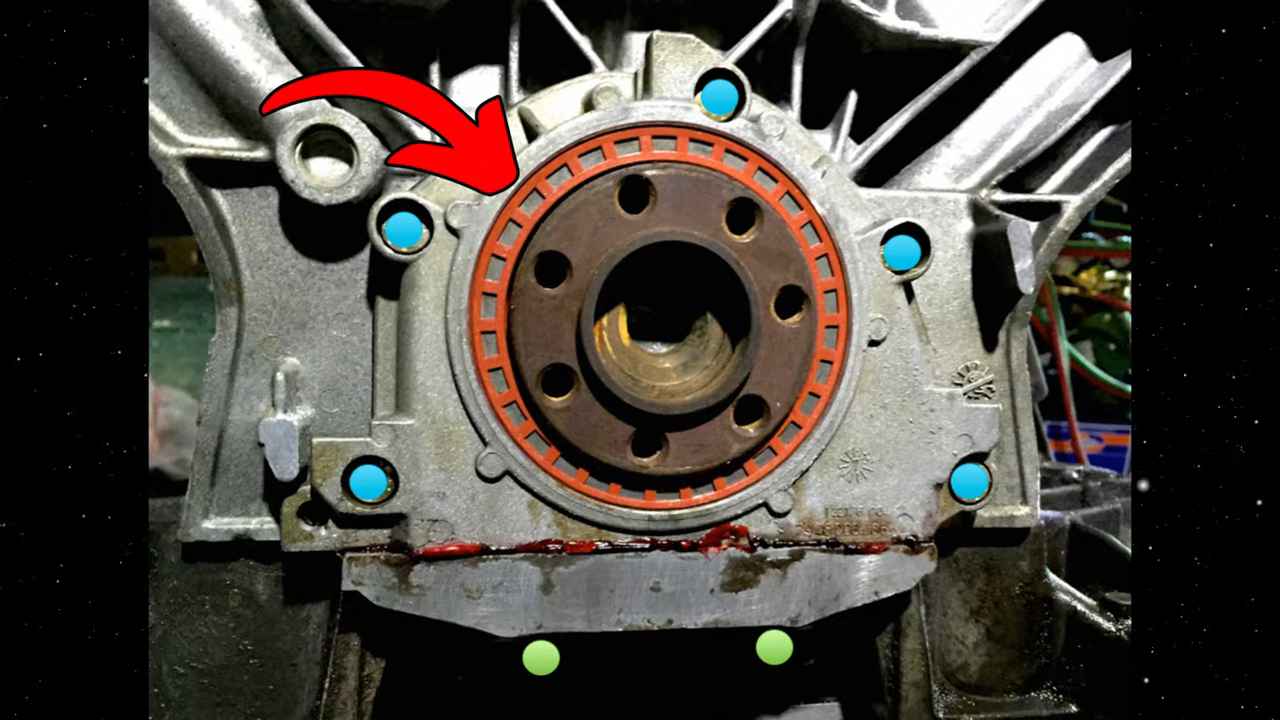 I get the oil changed every 5,000 mi because I’m a good customer. That means in between those oil changes, it would be acceptable for me to add five quarts of oil every time, which just doesn’t seem right. Welcome back. I’m Alex. Today we’re talking about some issues, some concerns with this 3 L Duramax.
I get the oil changed every 5,000 mi because I’m a good customer. That means in between those oil changes, it would be acceptable for me to add five quarts of oil every time, which just doesn’t seem right. Welcome back. I’m Alex. Today we’re talking about some issues, some concerns with this 3 L Duramax.
We saw that this engine is extremely efficient. Our fuel economy gauge literally did not budge. It still reads full. It toes very well on my towing loop. I just think people are going to be really happy towing with this engine and certainly comes as advertised.
I mean, 3,000 RPM. This is exactly what the EcoBoost was doing up this hill. Very impressive. And you do get a 100,000mi standard powertrain warranty or 160,000 km with this engine. But there are some things that I would want to keep an eye on if I own this engine.
Starting with the lowhanging fruit, emissions, baby.
This is a modern diesel engine, which means you get a full set of emissions. You get EGR, DPF, SCR, diesel exhaust fluid, and a DOC. And with all of those components, there is a high likelihood that sometime throughout the life of this engine, you will deal with an emission related problem. Whether it’s an EGR code, a clogged diesel particulate filter, or a knock sensor, which is right there.
I can almost guarantee that something emission related will pop up at some time with this engine. The best thing you can do for one of these engines is get in behind the freaking wheel and drive them. Driving these engines longer distances is going to get the emissions up to temp. And over the life of the engine, you’re just going to experience less emission related problems.
I know for the trucks that I work on, guys that are hauling heavy longer distances, they see a fraction of the amount of emission related problems that something like a vocational truck idling around town sees.
Those trucks tend to have a lot more emission related codes and they’re in the shop a heck of a lot more as well. So don’t be afraid to get behind the wheel and get these engines running hard and hot. So be aware if you’re one of those buyers that is going to be driving this truck in the city, not necessarily longer distances, and you’re buying it because you want that great fuel economy, which this engine will give you, you are probably more likely to experience emission related problems. Now, GM has been a little bit forward thinking with their emission system. First of all, with the LZO Duramax, GM has moved up the doc canister, which is this thing right here, to basically right behind the back of the turbo, and that’s going to allow the emission system to get hotter much quicker and should ideally help limit some of the emission related problems. Secondly, a good portion of the EGR gases are taken after the diesel particulate filter, meaning that there’s a lot less soot in them as they come back around into the intake of the engine. I think the EGR system impacts engine longevity the most. And I would like to see a lot more manufacturers do what GM has done with this EGR system. So GM certainly has tried to make their emission system a little bit more reliable, but at the end of the day, it is likely that if you own one of these engines for a long period of time, emission problems will be something you’ll deal with. Next is oil leaks.
Secondly, a good portion of the EGR gases are taken after the diesel particulate filter, meaning that there’s a lot less soot in them as they come back around into the intake of the engine. I think the EGR system impacts engine longevity the most. And I would like to see a lot more manufacturers do what GM has done with this EGR system. So GM certainly has tried to make their emission system a little bit more reliable, but at the end of the day, it is likely that if you own one of these engines for a long period of time, emission problems will be something you’ll deal with. Next is oil leaks.
Both the LM2 and this LZO have been known to have an oil leak or two. In fact, one of my best friends owns a 2023 LZO, and I’ve actually had his truck and engine on the channel.
He had a rear main failure and dumped oil everywhere. He was actually pretty lucky not to lose the whole engine. GM did release a technical service bulletin in 2023 to try and help Tex find some of these oil leaks, but there are a couple of common spots that these engines like to leak oil.
All right, let’s get under here. So, it seems like one of the more common oil leaks and annoying oil leaks, exactly what happened to my good friend, is the rear main seal leaking. And your rear main seal is essentially what seals the back of the crankshaft to the engine block or the the rear engine plate here. And when that leaks, tends to leak a lot of oil and it can be catastrophic. Now, alongside that rear main seal, there’s the rear engine plate, which you guys can see is this thing right here.
here. It’s where your um rear main seal actually sits in. And you can see there’s a little bit of excess silicone.
This has been known to leak. This oil pan gasket or this I guess doesn’t even look like it’s a gasket.
Looks like it’s silicone. This oil pan has been known to leak as well. And in behind this rear engine plate, there’s two engine oil plugs. So, this is the back of a 3 L Duramax with the rear engine plate removed. You can see we have our rubber oil pump belt right there.
And we’ll talk a little bit more of that in a sec. This picture is actually from a YouTube channel called Demon Works 3 L Duramax and he works directly on these engines and he’s got some fantastic information on them. So, I’ll put his link down below. If you own one of these engines, highly recommend you check him out. But right here, this is what I’m talking about.
So, I’ll put his link down below. If you own one of these engines, highly recommend you check him out. But right here, this is what I’m talking about.
There’s one oil plug, and there’s the other end. From my understanding, these can be rather difficult to diagnose for oil leaks, um, and can often be misdiagnosed for rear main seals. So, these can be a little bit of a headache. The problem with this is, well, as you guys can probably imagine, um, in order to get up in here, this transmission has to get the heck out of here. So, it makes it a really, really big job to fix these engine oil leaks.
There’s also an oil plug at the front of this engine, which has been known to leak as well. A common oil leaking spot on these engines. I don’t know why there’s so many common engine oil leaks on this engine. Maybe cheap parts, poor installation at the factory, but either way, having oil leaks on these 3 L Duramaxes is not uncommon at all.
Ah, yes, the old rubber oil pump belt on this 3 L Duramax.
How could we not touch on that? Because if you’re not aware, traditionally an oil pump is chain driven, but GM decided to switch things up with this engine, and it has a lot of people up in arms. A lot of stink has been made about this wet rubber oil pump belt. And I can sort of understand why because if your oil pump or the oil pump belt fails, the oil pump is no longer going to be pumping oil into the engine.
And it’s only really a matter of seconds, if not minutes, before the engine goes boom.
I personally don’t like it. I think it’s rather light duty for a pickup truck. These engines have been out since 2019 with these wet oil pump belts and there really hasn’t been catastrophic consistent oil pump belt failures. It seems like they’re holding up pretty decently. I think what really drives people crazy about them is where they’re located and what you have to do to replace them.
Once again, we got to get up under here because the oil pump belt is located at the rear of the engine. And in order to replace this oil pump belt, once again, this transmission has to be removed. So, it makes it a rather large job for something that could have just easily been a normal chain driven oil pump and not have to worry about. So, I understand why people don’t like it. I don’t necessarily think you should lose sleep over it if you own one of these engines.
And in order to replace this oil pump belt, once again, this transmission has to be removed. So, it makes it a rather large job for something that could have just easily been a normal chain driven oil pump and not have to worry about. So, I understand why people don’t like it. I don’t necessarily think you should lose sleep over it if you own one of these engines.
At least I wouldn’t. The next concern with these engines is engine oil consumption. Now, the LM2 Duramaxes were famous for burning a good amount of oil. And in April of 2022, GM released a technical service bulletin saying that some of the cam shaft housings had a faulty baffle in it, which could allow engine oil to be burned through the engine. Now, I still think this is somewhat of an issue even with the LZO engines.
Again, my good friend with the 2023 LZO, we were just chatting about his truck and he mentioned that it’s still drinking a fair amount of oil, but the thing with GM is their acceptable oil consumption rate is very high. According to GM’s own technical service bulletin 21-N272, quote, “The acceptable rate of oil consumption for engines used in vehicles referenced is one quart per 2,000 m. Important. This rate only applies to personal use vehicles under warranty that are driven in a non-aggressive manner and maintained in accordance with the appropriate maintenance schedule or driven at legal speeds in an unloaded condition. Again, important.
This rate does not apply for vehicles that are driven in an aggressive manner or at higher RPMs, higher speeds, or in a loaded condition. oil consumption for vehicles driven under these conditions, aka towing, the acceptable rate is 1 quart for 1,000 mi. And I guess in my opinion, if I was towing consistently, I don’t know, and my truck was burning one quart for every, let’s say, 1,500 miles. I went to the GM dealership, they would say that is perfectly acceptable. Now, I don’t really agree with GM here.
And I guess in my opinion, if I was towing consistently, I don’t know, and my truck was burning one quart for every, let’s say, 1,500 miles. I went to the GM dealership, they would say that is perfectly acceptable. Now, I don’t really agree with GM here.
In fact, I I strongly disagree with their acceptable rate of oil consumption. I mean, let’s say I own this truck. I owned a landscaping company and it was towing a trailer every day. So, I get the oil changed every 5,000 mi because I’m a good customer. That means in between those oil changes, it would be acceptable for me to add five quarts of oil every time, which just doesn’t seem right.
Even if I was driving this thing normally as a personal vehicle of what GM says and I got my oil changed every 7,000 miles, if I added two to three quarts of oil between oil changes on a brand new truck, that would be acceptable. Which again, I just I wouldn’t see that as acceptable myself. So, I guess just be aware these engines have been known to burn oil and GM is probably not going to do much about it.
Now, this engine is pretty much brand new. There’s about 1,500 miles on it and we were towing with this engine.
So, we’re going to check the oil, see if we’ve burnt any on first glance. Hopefully, you guys can see that we’re actually a little bit over full, but I think these engines do come a little bit over full from factory. So, haven’t burned anything catastrophic yet. Now fellas, this means it is extremely important that you guys are checking your oil consistently because last thing you want to do is run these things dry or run them with low oil. The next thing that caught my eye and this seems to be coming to light a little bit more recently is timing chain issues or timing chains stretching on these 3 L Duramax engines.
 And GM did update the timing chain, I believe in 2021, giving it a little bit more lubrication or better lubrication strengthening in it. But I think the biggest fear with this timing chain or having to replace this timing chain is how labor intensive it can be. The timing chain on this engine is at the back of the engine. So once again, it’s a common theme around this 3 L Duramax. In order to change or replace the timing chain, this transmission has to be removed.
And GM did update the timing chain, I believe in 2021, giving it a little bit more lubrication or better lubrication strengthening in it. But I think the biggest fear with this timing chain or having to replace this timing chain is how labor intensive it can be. The timing chain on this engine is at the back of the engine. So once again, it’s a common theme around this 3 L Duramax. In order to change or replace the timing chain, this transmission has to be removed.
In fact, the cab actually has to be removed as well to gain access to the timing chain, which makes this a very labor intensive as well as a very expensive job up to like $10,000 to replace your timing chain.
So, I understand why people are getting a little bit worried when more and more of these timing chain failures are popping up. When I first reviewed this 3 liter Duramax, I did touch on the fact that it had a rear gear train. I thought it was a bit interesting, but most European diesel engines, which this engine has a European origin, tend to have a rear gear train. The Detroit diesel engines that I work on, which is our Mercedes engine at this point, their gear trains are all at the back.
So, to me, it didn’t really matter too much. And it didn’t clue into me that this engine would have a timing chain at the back. Not an actual gear ongeear gear train like the big diesel engines I work on. A true gear train should last the life of the engine, but a timing chain is a different story. In my opinion, a timing chain is sort of a wearable item.
In my opinion, a timing chain is sort of a wearable item.
Yes, it should last a long time, but if you own the engine or any engine with a timing chain for a good amount of years, odds are you might have to change at some point. And having a timing chain stuffed at the back of the engine like this. I don’t know. I just I I feel like it may have been a mistake for GM to do that, especially with the oil pump belt at the back of the engine because once again, it’s a rear gear train engine. It would have been really nice to see the gear train come up to the front.
That way you had a front timing chain, a front rubber oil pump belt, and that would save a ton of time when having to potentially replace those items, and therefore it would just it wouldn’t be as scary of a replacement.
So, it’s not like these engines are having catastrophic timing chain issues. We are starting to see a little bit more timing chain failures, but the big problem I think is the fact this engine is a rear gear train. It has a timing chain at the back of the engine versus at the front. So, the 3 L Duramax is not perfect, but overall in terms of modern 2025 engines available in the 1500 segment, this 3 liter Duramax, I think, is still a pretty darn good option, especially if you really want to buy a GM product or a GM truck.
For me, if I had to buy a GM 1500, it would come with a 3 liter Duramax. I think it’s the best engine they sell right now currently. In fact, GM is on record saying that this 3 liter Duramax diesel is the most reliable diesel they’ve ever put into a truck. So, there you go. Let me know if you guys think I forgot something.
I don’t actually personally work on these little diesel engines, and you guys always seem to know more than me.
Anyways, if you do own a 3 L Duramax, what has your experience been like? Do you like it? Has it been problematic for you? Let me know.
I always learn a lot from your comments. If you did like the video, don’t forget to leave that thumbs up. If you like cool stuff like this, don’t forget to subscribe because we’d always love to have you on board. Anyways, enough of me. We’ll see you in the next freaking.

